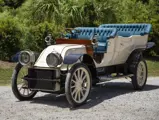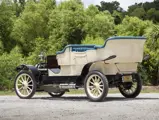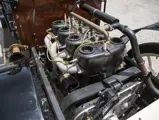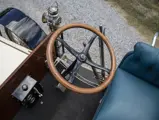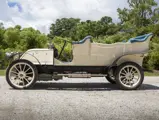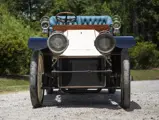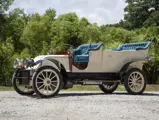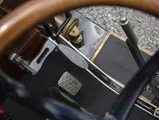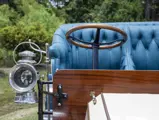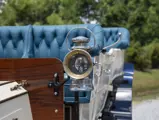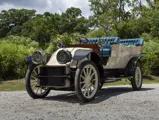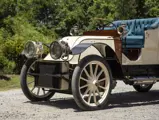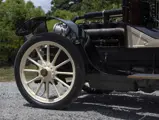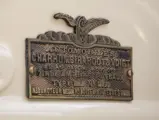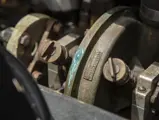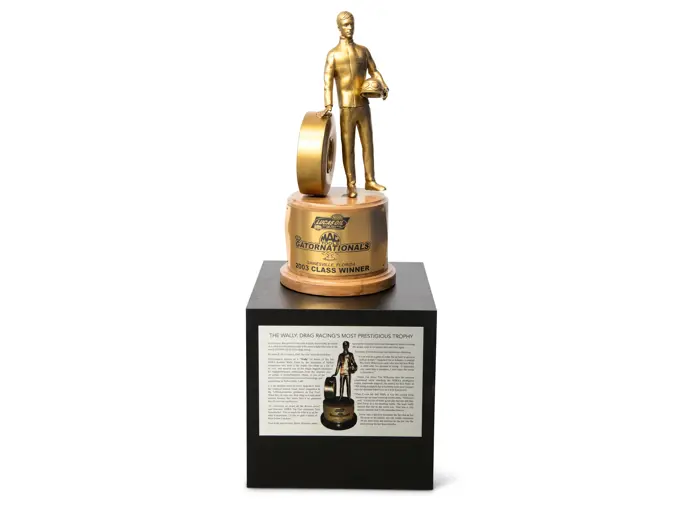Hershey 2022
1904 C.G.V. Type 75 Nine-Passenger Tourer
{{lr.item.text}}
$350,000 - $450,000 USD | Not Sold
 | Hershey, Pennsylvania
| Hershey, Pennsylvania
{{internetCurrentBid}}
{{internetTimeLeft}}

- An extremely rare offering from a prestigious French marque
- Believed to be the sole Type 75 1904 C.G.V. extant
- A truly powerful and fast antique automobile of imposing size and magnificent presence
- Benefits from a five-year meticulous restoration; presently fitted with a 75-hp Seagrave engine
- A compelling touring candidate, with great potential for events worldwide
The C.G.V. automobile was the product of Fernand Charron, Léonce Girardot, and Émile Voigt, who went into the automobile business in Puteaux, a western suburb of Paris. Charron and Girardot had run a successful Panhard dealership since 1897. They took on Voigt as a partner in 1901 and produced their first car that year, not surprisingly along Panhard lines, although with a lower stance and hence a more stable center of gravity. It used what is now called a “Renault hood” with a low-mounted radiator between the frame horns. A 3,306-cubic-centimeter four-cylinder car, it had atmospheric intake valves, a four-speed gearbox and dual chain drive.
The first deliveries were made in 1902, and mechanical intake valves were soon adopted. Models included an 8,616-cubic-centimeter T-head 40-horsepower car. By then a worthy competitor to Panhard, the C.G.V. was marketed in Britain, where distinguished customers included the Duchess of Devonshire and the Earl of Carnarvon. The King of Portugal also purchased a C.G.V. Smith & Mabley, the New York City Panhard importers, took a franchise and sold it as the “American C.G.V.” A few were even assembled for them at the Rome Locomotive Works in upstate New York.
By 1905, engine size had reached 9.8 liters, then 12.9 liters the following year. Annual production rose to 265 for 1905, but the following November the partnership broke up. Girardot left to join the firm building the G.E.M. gasoline-electric propulsion car, at Puteaux, and Voight went to America and the C.G.V. factory in New York. Charron took over the C.G.V. operations in France and renamed the cars for himself. In 1908 he joined Clément-Bayard.
Although this C.G.V.’s earliest years are as of yet unknown, it has been suggested that it was delivered new to a member of the Russian royal family and kept in France; certainly, a customer of that caliber would have been in keeping with the marque’s target market. Later, it is believed to have gone to Italy. The known history of this C.G.V. Type 75 begins with its discovery in South America in the 1960s by Hector Mendoncino. As found, it was essentially complete and original, save for its missing engine. Late in that decade it was transported to New England.
Around 2000, while under the care of Don Koleman of Competition Motors in Massachusetts, a suitable substitute engine of similar configuration and capacity was located, originally from a Seagrave fire engine. This 75-horsepower engine was installed, using the original four-speed transmission and dual-chain drivetrain, and the car was returned to running condition. It was then shipped to Florida.
In the summer of 2009, it was sent to Vantage Motorworks in Miami, Florida, where it was disassembled to remedy some environmental issues that had occurred in storage. Reassembled by Dave Heinrichs, it was running again in 2014 and sent to Steve Littin’s Vintage Auto & Rebuilds in Ohio for completion. An inspection of the car at this time revealed nickel-plated fittings throughout, an interesting and forward-looking finish in an era when brass was the default. Further, the body, frame, axles, and four-speed gearbox—indeed, all major components save for the engine and steering box—were found to be of original C.G.V. manufacture. During the five-year final restoration, the interior was crafted in luxurious blue leather by Sharp Automotive Upholstery of Elyria, Ohio.
The car’s overall appearance is best described as “massive.” The body is painted a light cream hue, contrasted by black fenders and the blue upholstery. The frontal aspect is dominated by huge BRC headlamps, complimented by Lucas “King of the Road” sidelamps. Nine passengers are accommodated in three full-width seats, one facing backward, and two jump seats that fold down from the side.
Behavior can only be deemed “fast.” The car easily crests 70 mph in third gear. The new owner will have the opportunity to engage fourth for the first time; goggles will be essential. Believed to be the sole surviving 1904 C.G.V. Type 75, the only other known C.G.V. of this period in the United States is a 1906 75-horsepower limousine in the Larz Anderson Museum near Boston. Completely different in character, it is more like a boudoir and is fitted with a commode.
Rare and compelling, this C.G.V. Type 75 comes with a dossier recording its discovery and restoration. It is a powerful and immensely appealing tour car in its present form, notably retaining many original C.G.V. components throughout. Should its next owner decide to recreate its original motor, it boasts nearly unlimited potential at the world’s premiere veteran automobile events.

